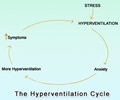Scientists from University of California, Irvine, have suggested that a new therapy may soon help restore limb function long after the injury in stroke patients.
The researchers discovered a naturally-occurring protein in humans that has been found to restore motor function in rats after a stroke.When administered directly to the brain, the protein appeared to restore 99 percent of lost movement and if given through the nose, 70 percent of lost movement is regained.
Moreover, untreated rats improved by only 30 percent.
"No drugs exist that will help a stroke after a few days. If you have a stroke, you don't have many treatment options," said James Fallon, psychiatry and human behavior professor and senior co-author of the studies.
"Now we have evidence there may be therapies that can repair damage to a significant degree long after the stroke. It's a completely unexpected and remarkable finding, and it's worth trying in humans," Fallon added.
Lead researcher Magda Guerra-Crespo chronicles the success of a small protein called transforming growth factor alpha, which plays critical tissue-forming and developmental roles in humans from just after conception through birth and into old age.
Advertisement
Scientists sought to learn whether TGF alpha administered directly to the brain could help rats with stroke-induced loss of limb function, typically on one side - as is seen in humans.
Advertisement
"It's becoming more and more clear that the brain is like any other organ: It has a lot of potential to regenerate," said Darius Gleason, a developmental and cell biology graduate student who worked on the study.
"We are just emulating nature by giving a little nudge to what the brain is trying to do itself," Gleason added.
The study appears in journal Neuroscience.
Source-ANI
SRM













